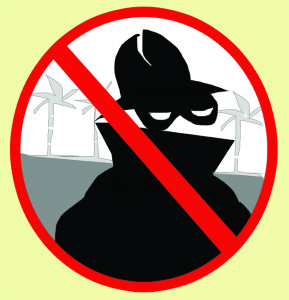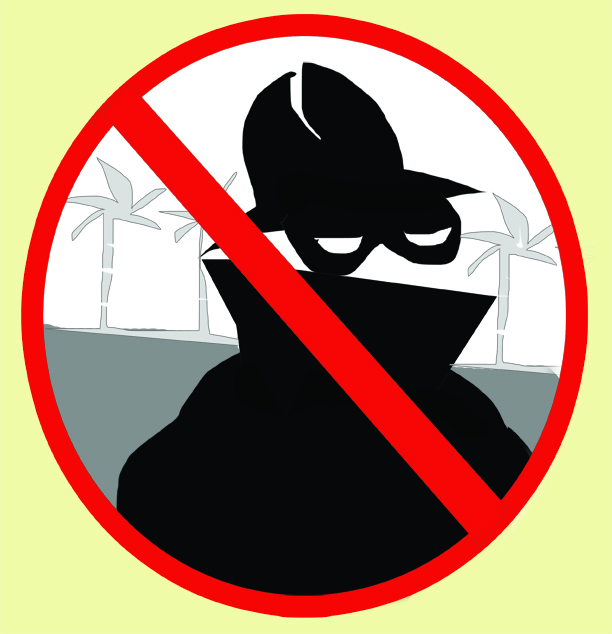Campus crime figures for the 2011-12 academic year show little overall divergence from previous years, according to data compiled by the Stanford University Department of Public Safety (SUDPS). Alcohol-related incidents, however, did increase by a significant margin.
The Stanford campus experienced a 45 percent increase in medical alcohol transportations this school year as compared to last year. Between September 2011 and April 2012, 77 people were transported for alcohol-related medical reasons. There were 53 transports during the same time frame last year, according to SUDPS records.

Despite the uptick in transports, the Office of Alcohol Policy and Education (OAPE) recently declared the first year of the Cardinal Nights alcohol-free entertainment initiative to be a success in creating community on campus for non-drinkers.
Forty-eight drivers were cited for being in possession of alcohol during this academic year, representing more than double the 23 cited during the same time frame last year. Twenty-four citations were issued to minors in possession of alcohol, only one more than issued last year.
The rate of DUIs doubled to 16 from September 2011 to April 2012 from the eight arrests made during that time frame last year.
Seven people were cited for possession of a controlled substance this year, while 10 were cited for that offense during the same months last year.
There were eight reported sex offenses compared with five reports last year: two batteries, one incident of indecent exposure, two rapes, one sexual assault and two unverified report. Of the five reports from the previous year, three were for incidents of rape.
Both vehicle and dorm burglaries decreased this year. Fourteen vehicle burglaries and 15 dorm burglaries were reported. Last year, 34 and 19 reports were filed for those crimes, respectively.
Petty theft during this time period rose by nearly 68 percent, with 357 reported incidents this year compared with 241 reported incidents for the same time frame last academic year.
Reported incidents of both structural and vehicle vandalism were cut in half, with 13 structural vandalism incidents and six vehicle vandalism incidents this year compared with 26 and 11 last year, respectively.
“People have asked throughout the year if there has been an increase in the number of AlertSUs [emergency notifications] and if there has been an increase in crime,” wrote Chief of Police Laura Wilson ‘91 in an email to The Daily. “What people may not know is that the University is required to send these according to a federal law known as the Clery Act. We have modified some of our practices over the past year in order to ensure that we are complying with the law to the fullest extent possible.”
Wilson also noted that her department has received more community requests for active shooter and active killer response training sessions during this academic year.
“These training sessions provide people with information about options they can take during an active shooter incident as well as the important steps the community can take to bring concerning behavior to the attention of skilled professionals in an effort to preclude violence,” Wilson wrote.
However, Wilson said that by far the most prominent SUDPS initiative during the 2011-12 academic year has been its bicycle safety program.
While acknowledging that students may not be happy with the increased presence of SUDPS officers near stop signs to issue tickets for traffic offences, Wilson noted that members of the Stanford community have yet to propose viable alternative solutions to the bicycle safety problem on campus other than increased enforcement.
“What really became obvious is that a tremendous amount of educating and informing students had been done but education alone wasn’t changing the culture,” Wilson wrote.
“Many people are not only exasperated by bicyclists failing to stop at stop signs and riding at night without proper lighting, they are altering their behavior in order to avoid the possibility of being involved in a collision with a bicyclist,” Wilson wrote.
Wilson cited anecdotal evidence of greater cyclist caution at the Campus Drive-Escondido Road stop sign and an increased number of bikers wearing helmets at that intersection as potential evidence of positive impact from the escalated enforcement.
Yesterday, in “OAPE cites gains with Cardinal Nights,” The Daily reported that there were 64 transports last year and 66 this year. This information came from Angelina Cardona ’11 of the Office of Alcohol Policy Education; the statisitics in today’s article came from Laura Wilson, chief of police and director of the Stanford Department of Public Safety. Representatives from OAPE and SUDPS were unreachable for comment Wednesday evening. The Daily is currently working to explain the discrepancy between the statistics.
